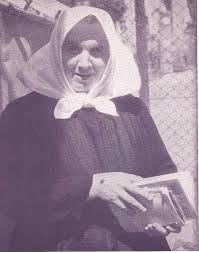 The mystical life of the Catholic Church is rich with a variety of experiences. Let’s think of many men and women through the ages: Francis and Dominic, Catherine of Siena, Padre Pio, Catherine of Genoa, Hildegard of Bingen, and Sister Nazarena, to name a few. There are those who, because of God’s will, bore the wounds of the Lord’s holy Passion, not for their own designs but to bring others closer to the Savior. This is key. Yet this is a remarkable claim to make. I am sure there frauds but the people I am mentioning here do not fall into this category. I can think of Francis of Assisi, Catherine de Ricci, Anne Catherine Emmerich, Gemma Galgani, Rita of Cascia. In the history of salvation the Church can name more than 300 persons, most of them women, who bore in their body the wounds of Jesus.
The mystical life of the Catholic Church is rich with a variety of experiences. Let’s think of many men and women through the ages: Francis and Dominic, Catherine of Siena, Padre Pio, Catherine of Genoa, Hildegard of Bingen, and Sister Nazarena, to name a few. There are those who, because of God’s will, bore the wounds of the Lord’s holy Passion, not for their own designs but to bring others closer to the Savior. This is key. Yet this is a remarkable claim to make. I am sure there frauds but the people I am mentioning here do not fall into this category. I can think of Francis of Assisi, Catherine de Ricci, Anne Catherine Emmerich, Gemma Galgani, Rita of Cascia. In the history of salvation the Church can name more than 300 persons, most of them women, who bore in their body the wounds of Jesus.
The Servant of God Theresa Neumann (1898-1962) is one such person who is known to be a mystic and stigmatist. She is a person who trusted deeply in the Lord. The teaching of the Church says mysticism is that “intimate union with the Divinity, or a system growing out of such a tendency and desire.” Mystics are intimately connected with what we believe about the Holy Spirit and discernment. And by “mystic” I do not mean Theresa Caputo the Long Island Mystic who is a fraud.
This afternoon, at the request of my friend Glenn, I watched a 50 minute film on the life of Theresa Neumann, a German mystic and stigmatist who faced controversy and yet was resolute in doing what God asked of her. Glenn studies the mystical phenomenon found in the Church. Without Glenn’s encouragement I wouldn’t be drawn to this form of discernment.
For looking for the remarkable, many are intrigued that Theresa Neumann subsisted for 36 years only the Eucharist; it wasn’t that Neumann lived on nothing –she lived on the Savior. She said, “The Savior can do all things. Did He not say that “my Flesh is real food, and my blood is real drink?”
Her visions were spontaneous and biblical; she was convinced that her life was guided The Little Flower (many of Neumann’s own healings coincided with Theresa’s beatification and canonization). Neumann experienced the Lord’s Passion 780 times except during the liturgical season of Christmas and Easter. For what it’s worth, Churchmen and scholars, laity and professionals say that they felt her visions and stigmata were a genuine supernatural manifestation.
Some who met her attested to Neumann’s visions being authentically biblical, even her speaking in the Lord’s tongue, Aramaic, and bestowing certitude in the Lord’s holy Passion and resurrection. But only in knowing Theresa Neumann could one say with certitude that she was doing the Lord’s work and not her own: knowing Theresa you came to know a woman who had a deep trust in God; skeptics left converted.
What I became interested in as a result of this film was Neumann’s humanity. Who was she as a person? Several things were revealed: she was not easily influenced, she was vivacious, warm, loved to joke and tease, a god mother, cared for the dying, loved nature and working, tended a garden and prefer the outdoors, not overly pious, loved horses, and like to travel. Sounds like a good woman to me!
What Theresa Neumann verified in her life with the wounds of the Passion was what Saint Theresa had said, “more souls are savers through suffering than by brilliant sermons.” She felt a deep responsibility to lead others to Jesus Christ, the Savior. And this central for us: do we feel the responsibility to show the face of Jesus Christ to others? Does our life lead others to a deeper communion with the Trinity?